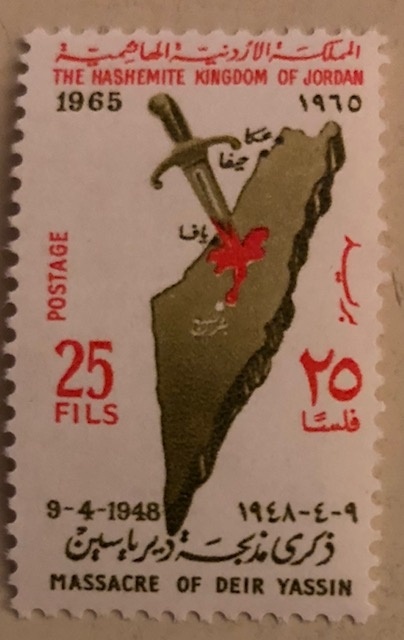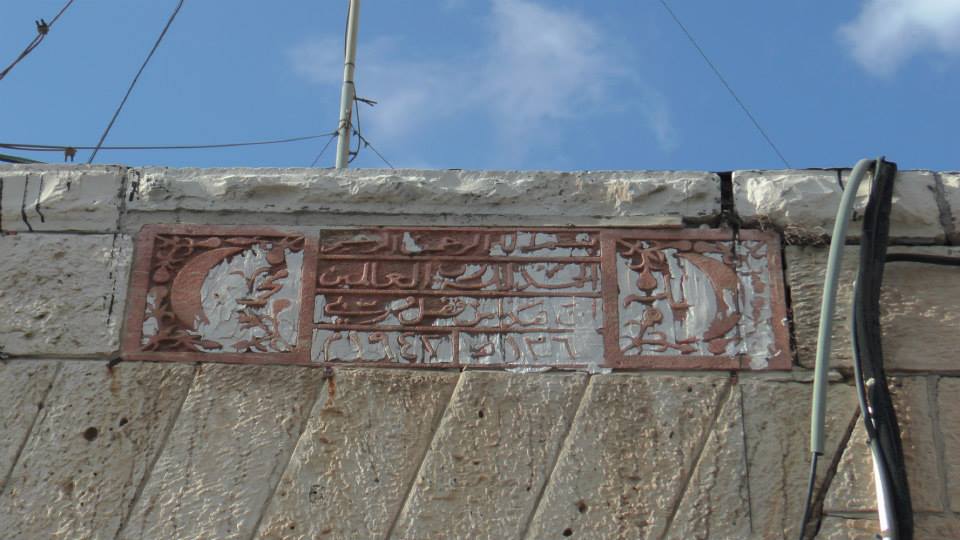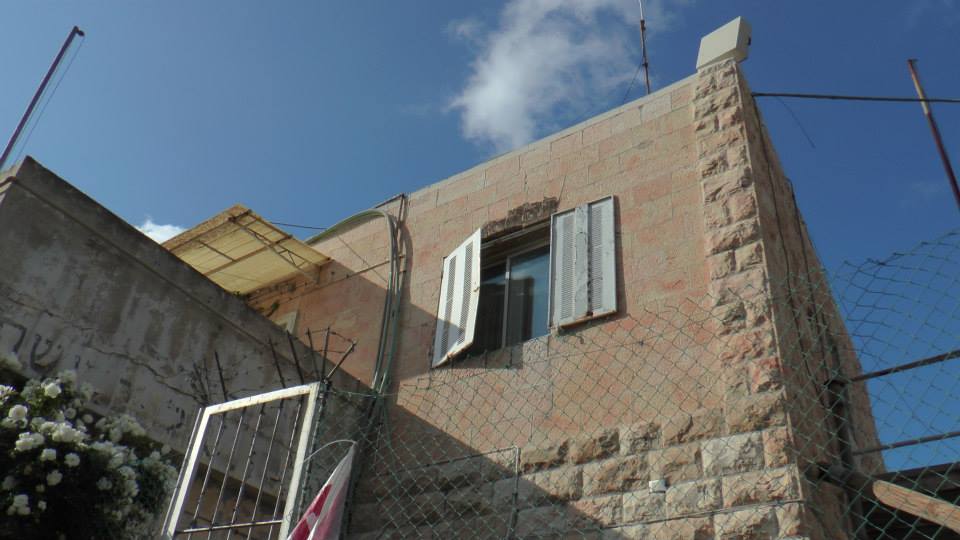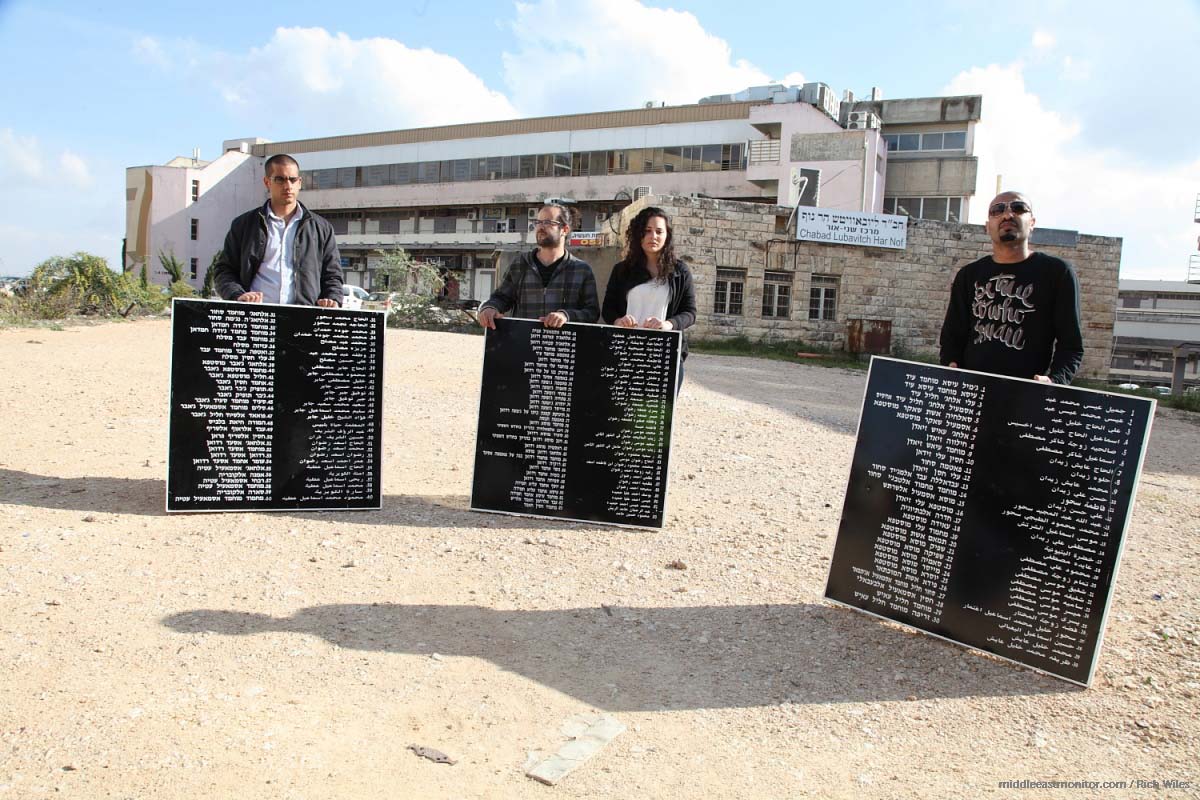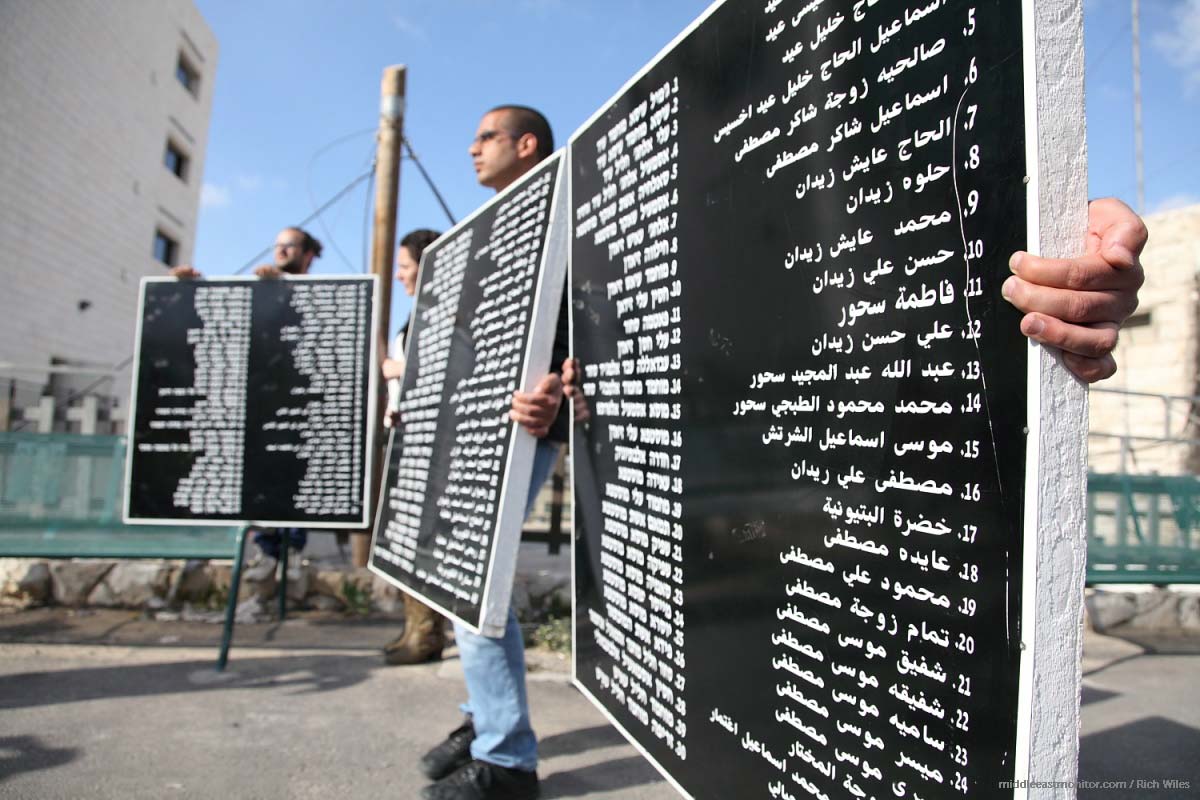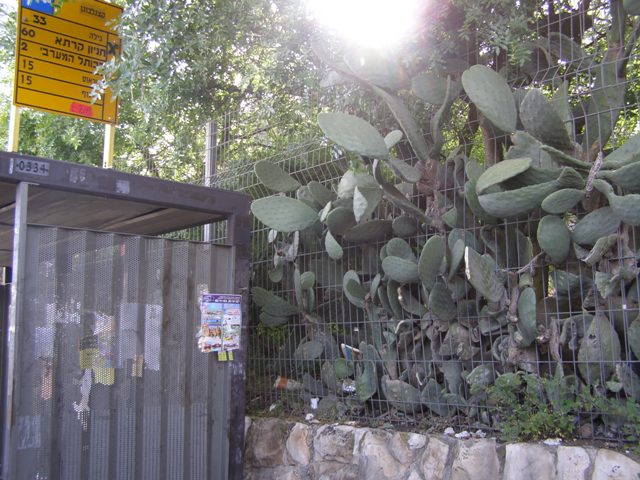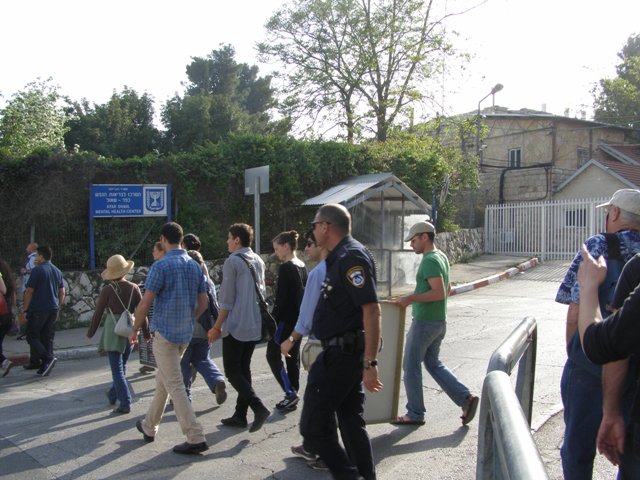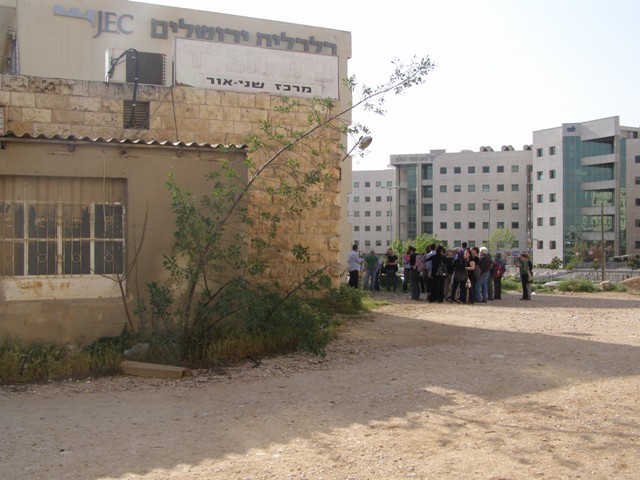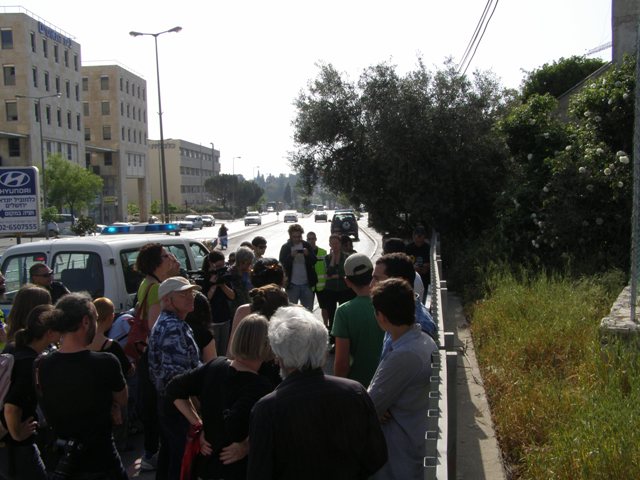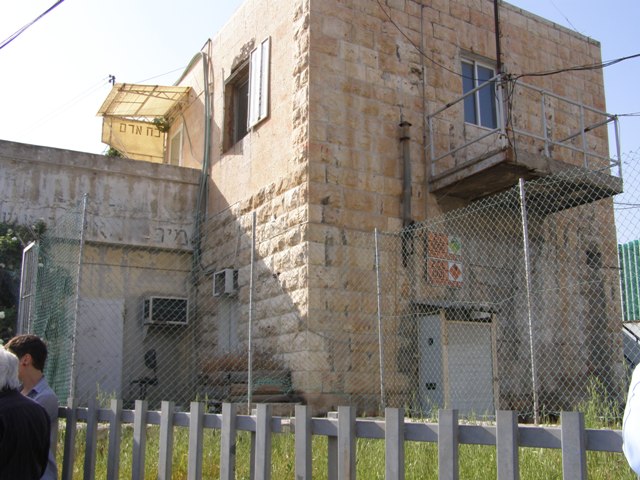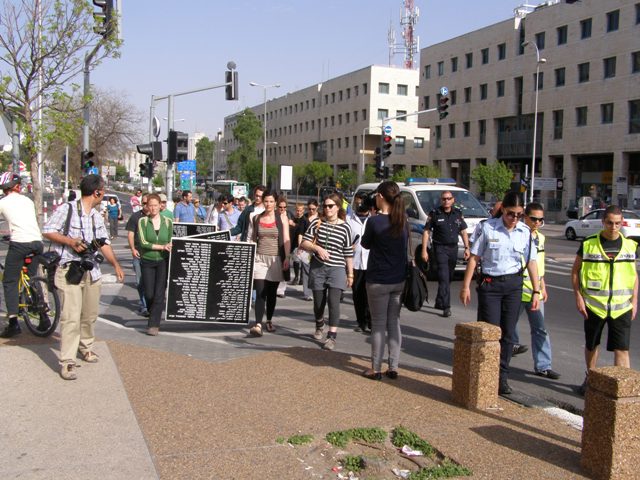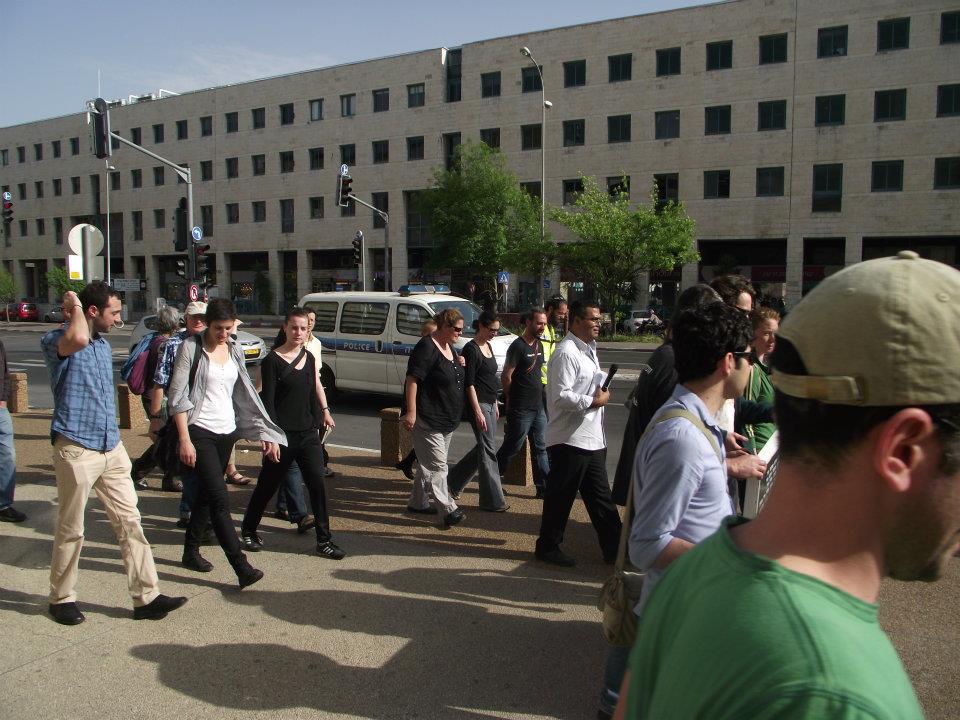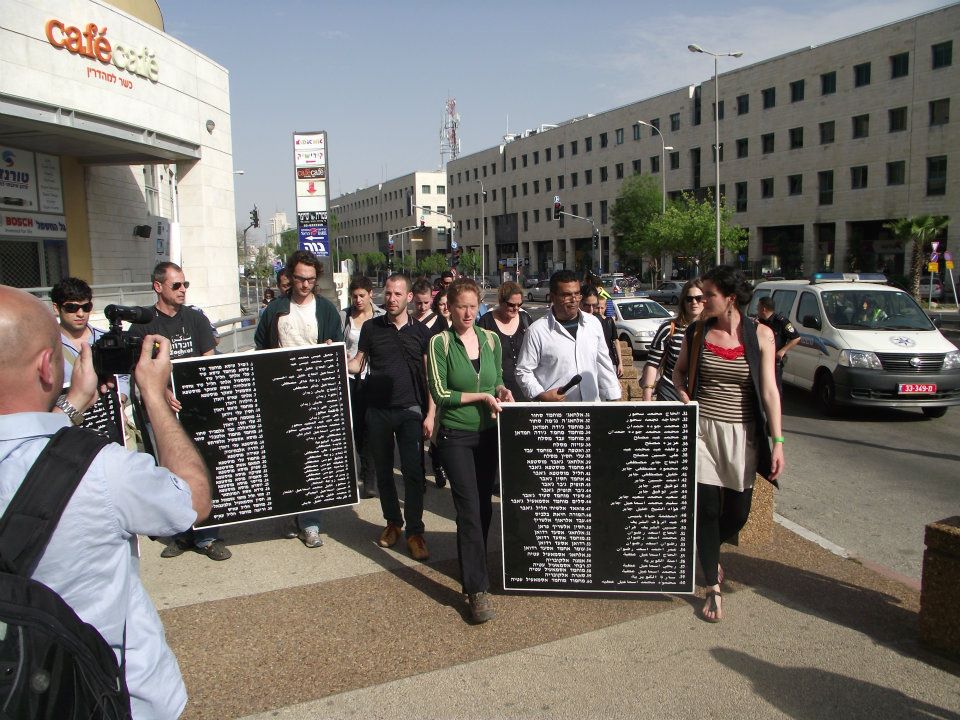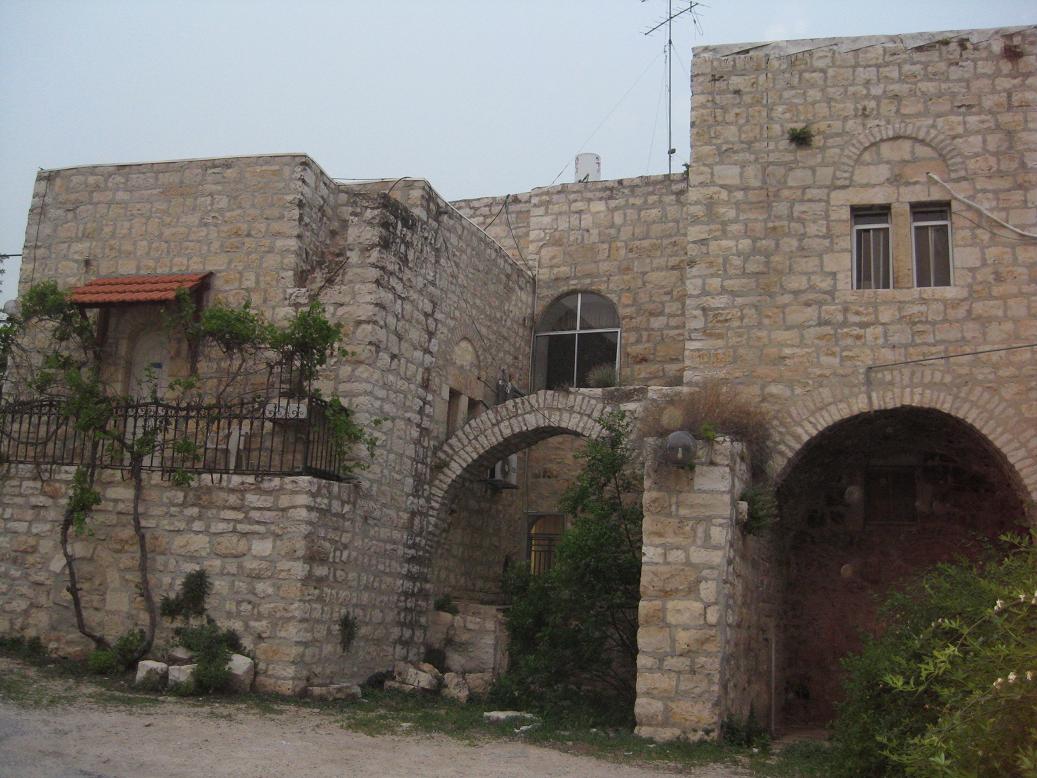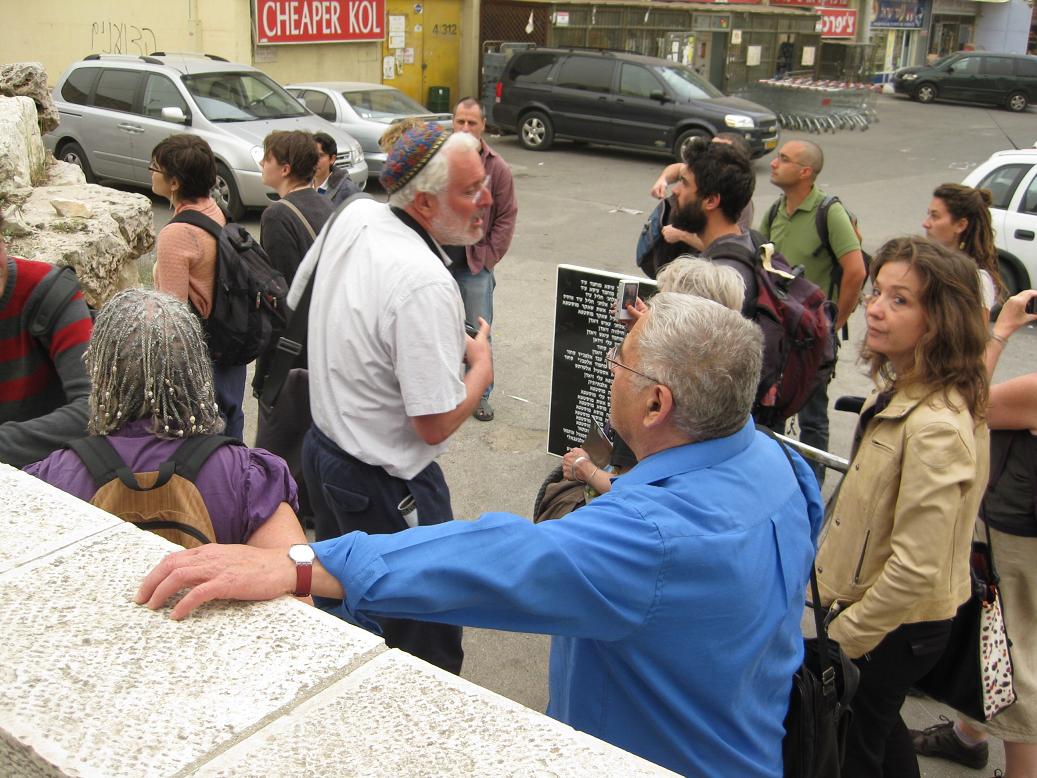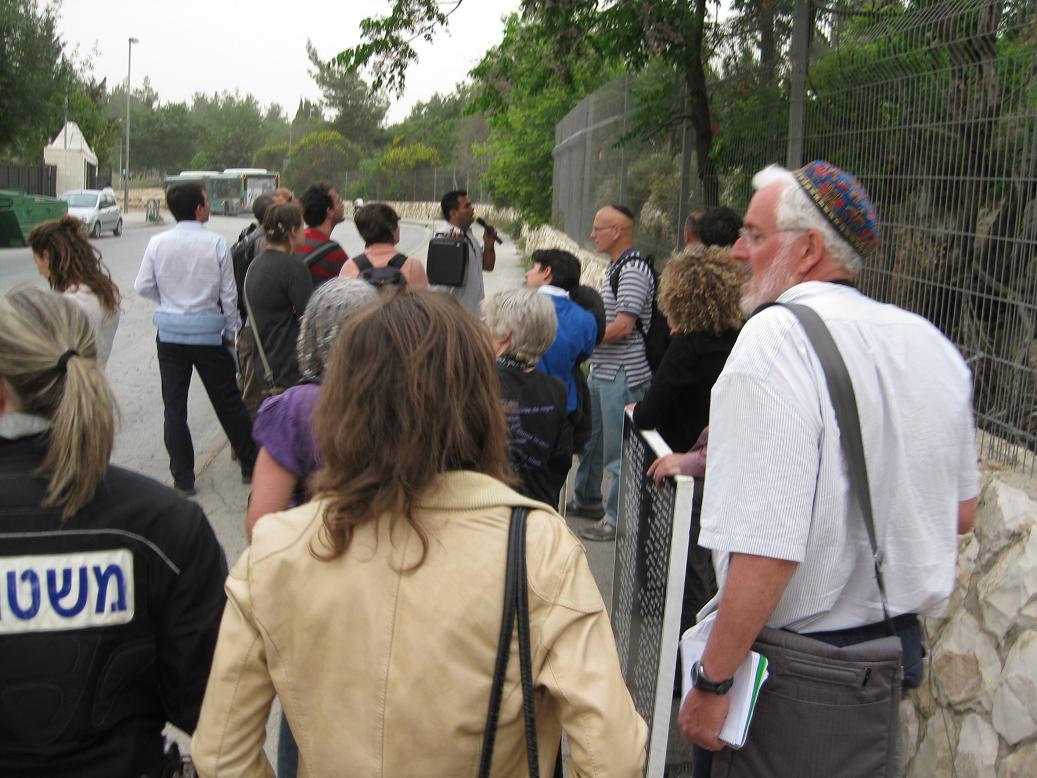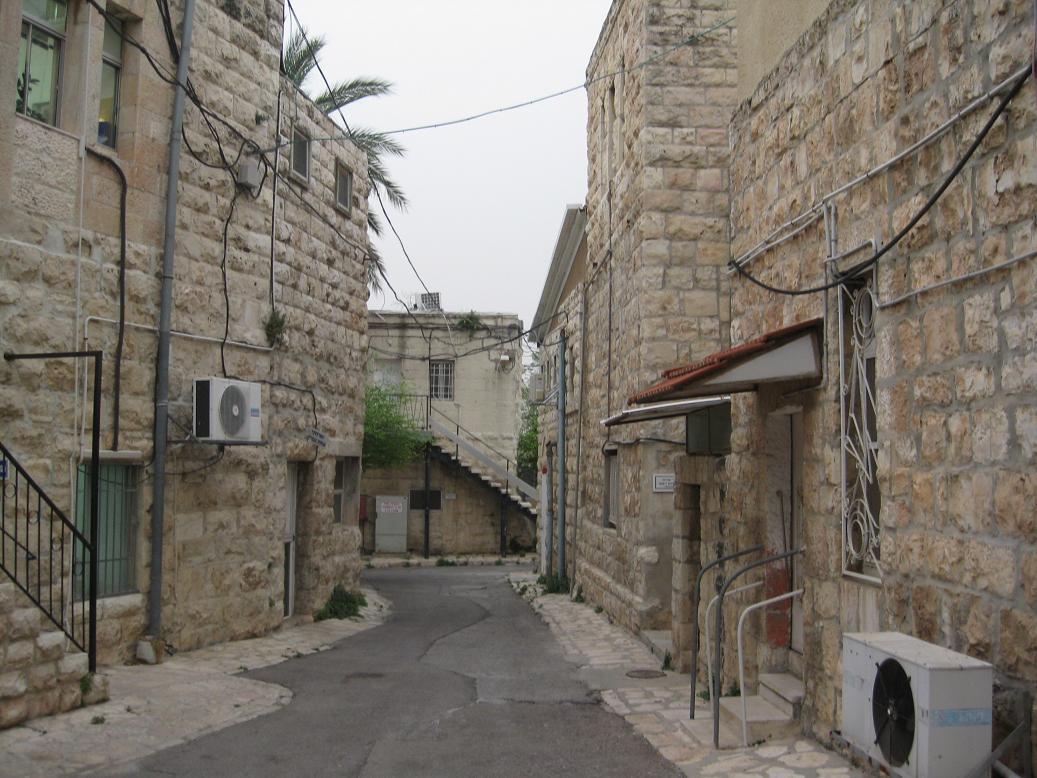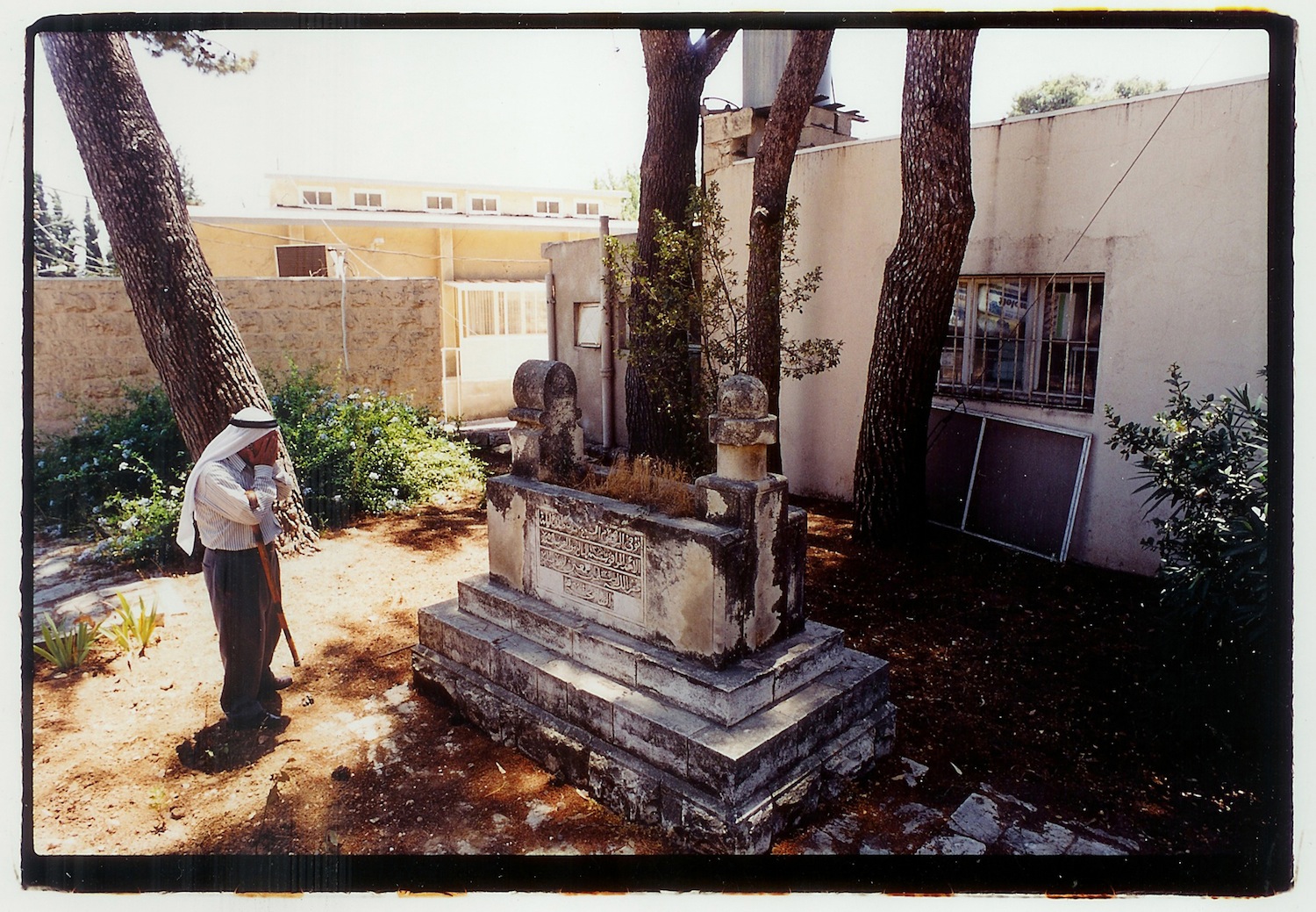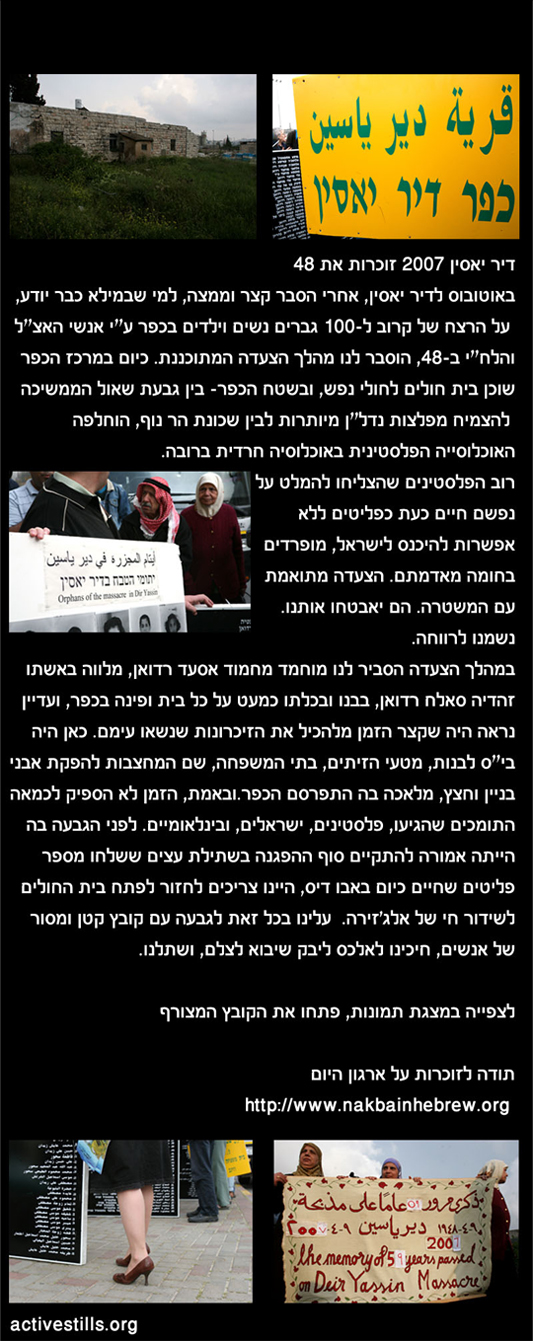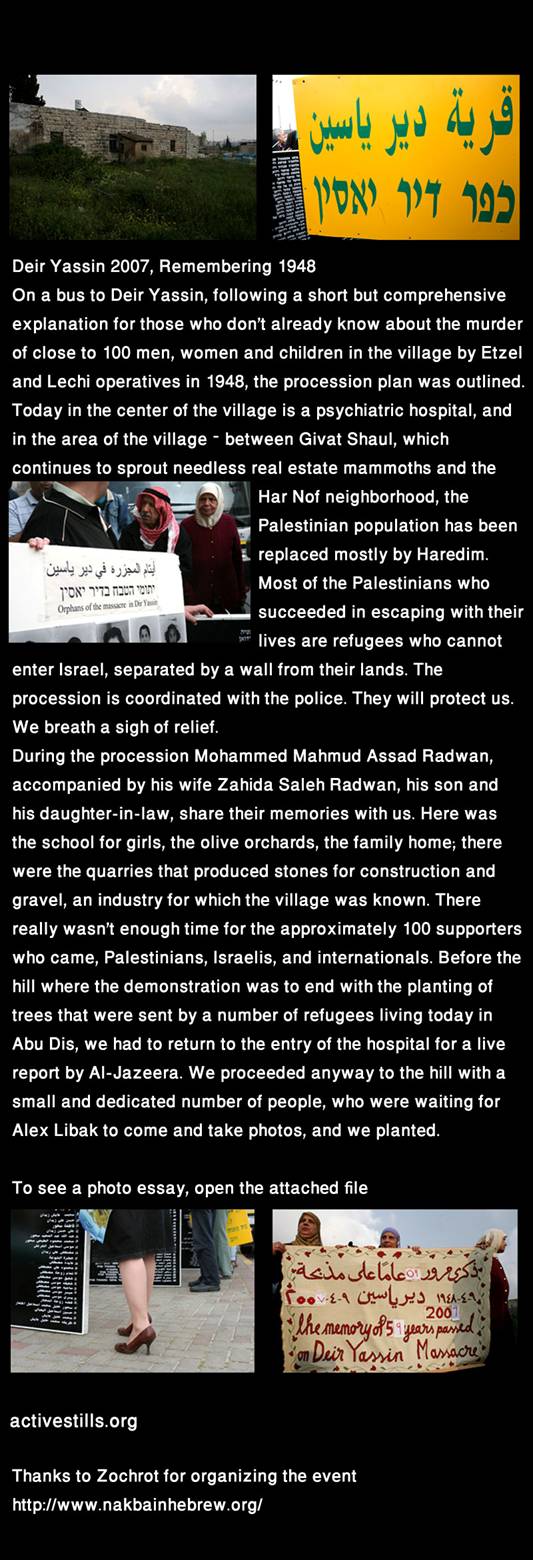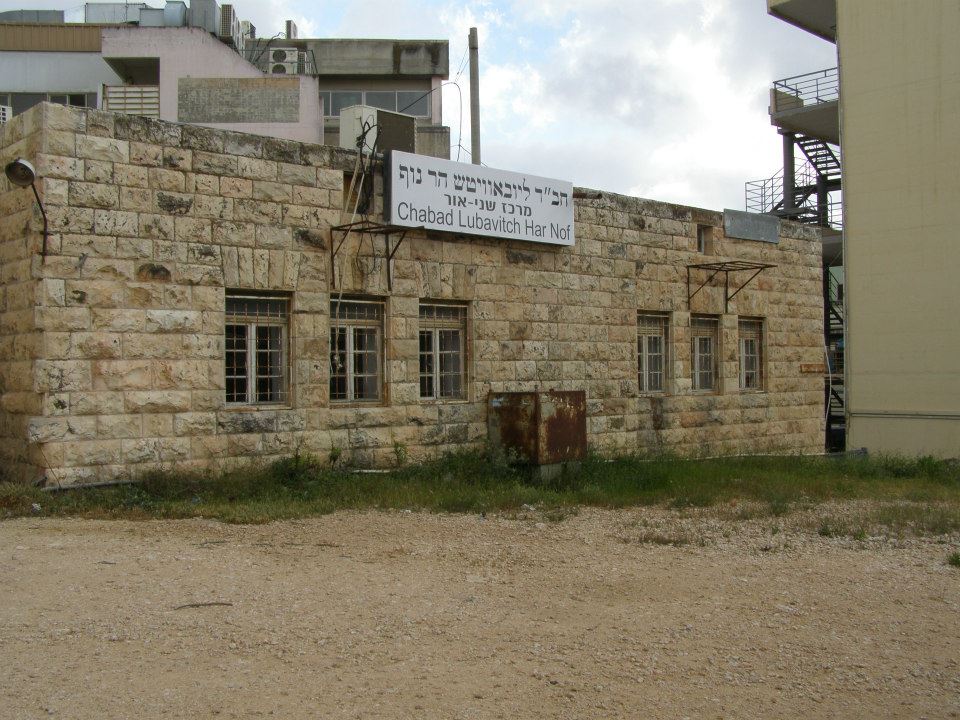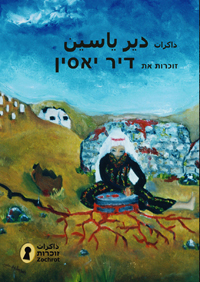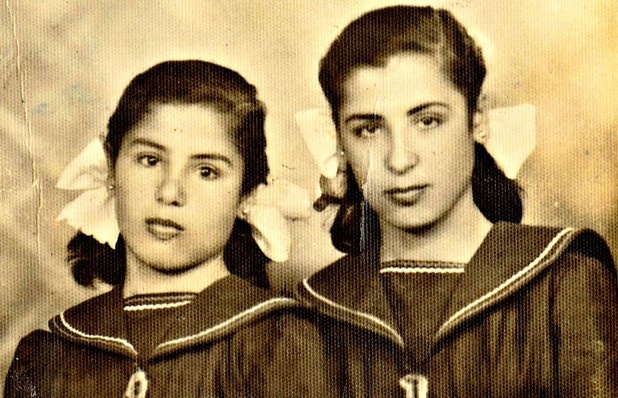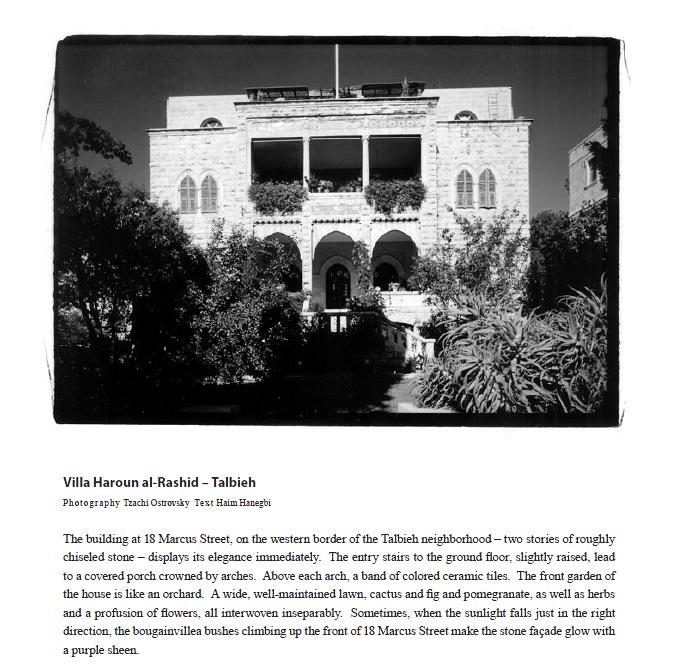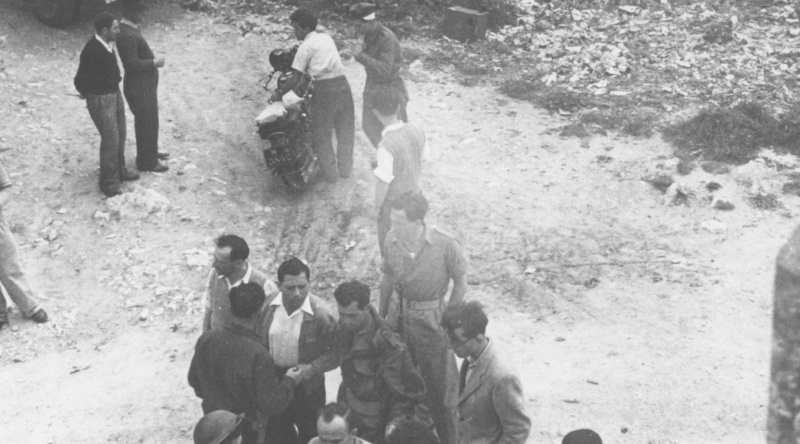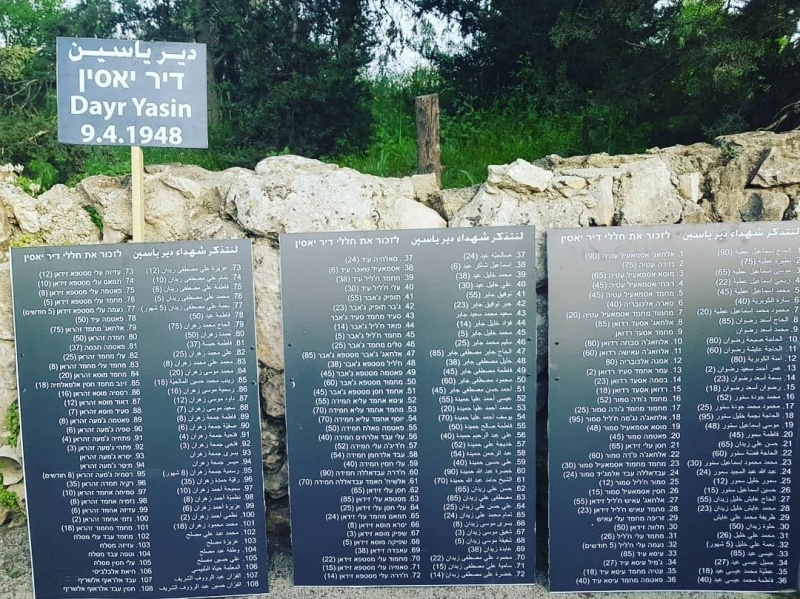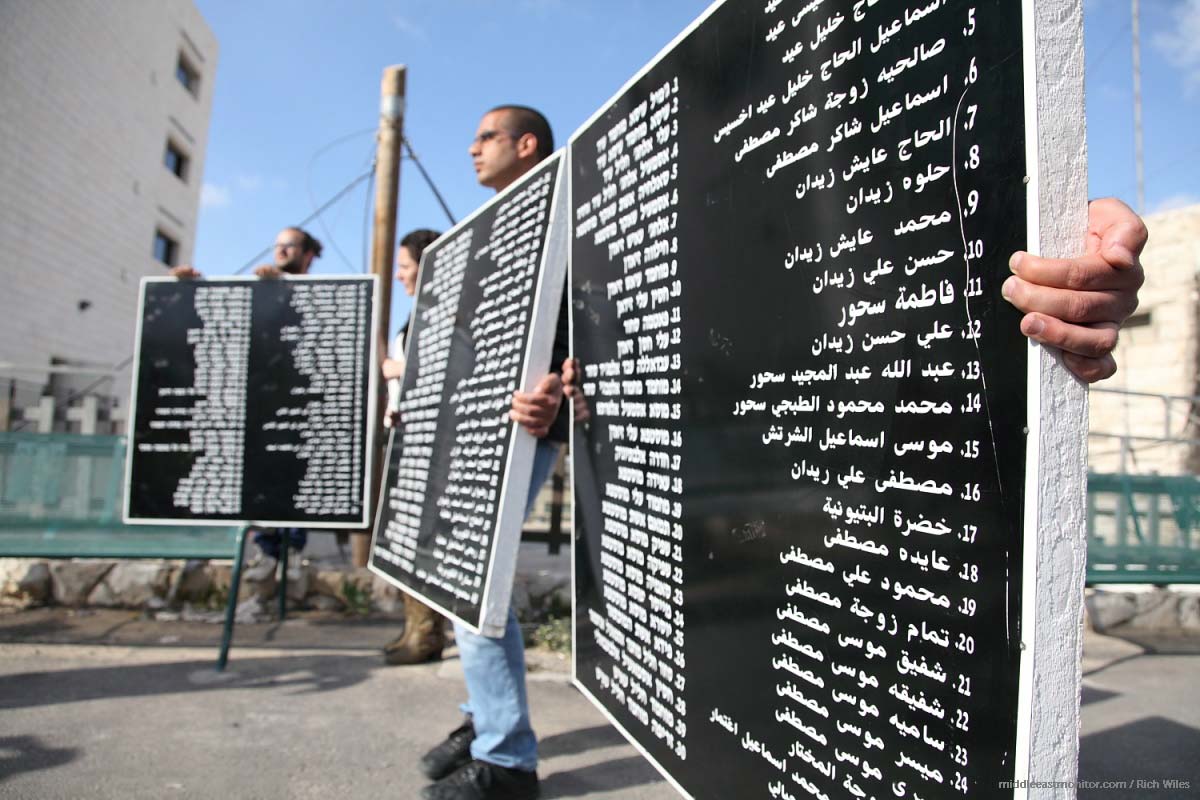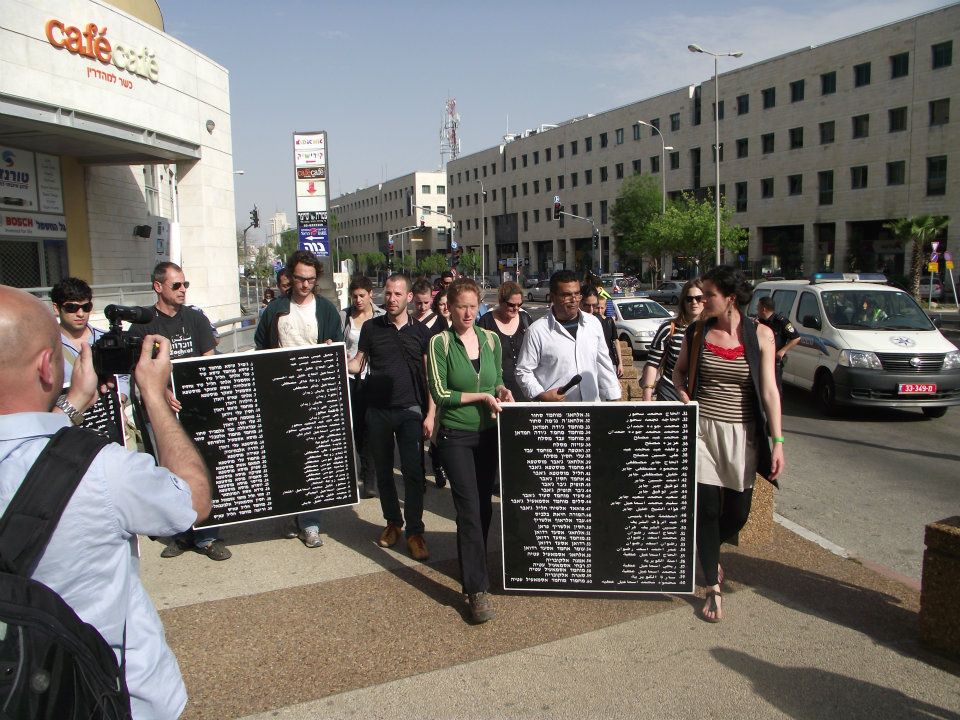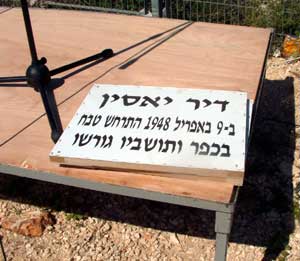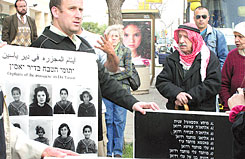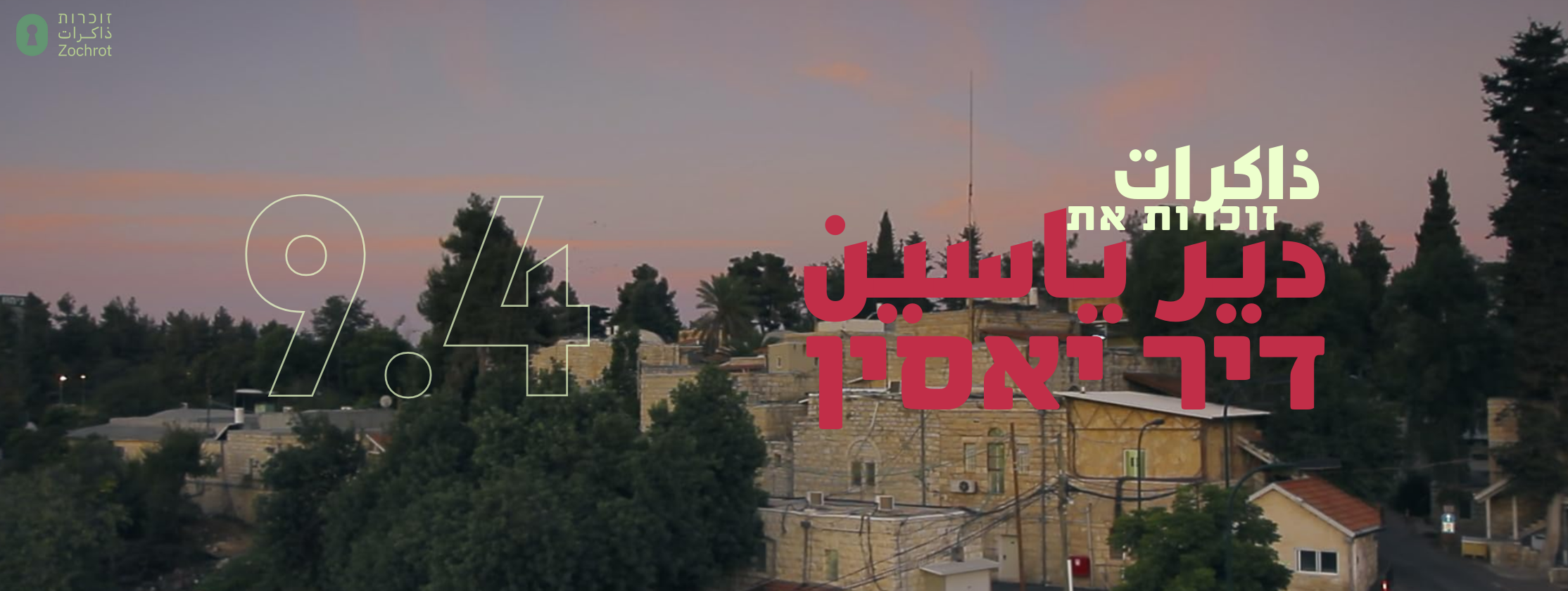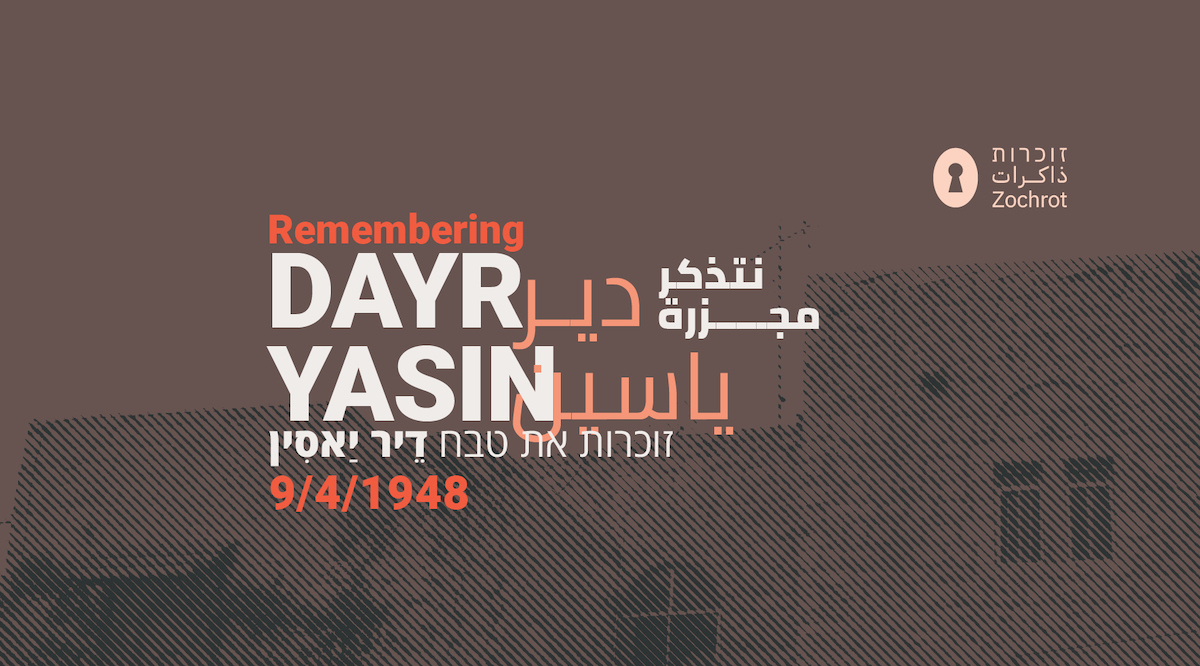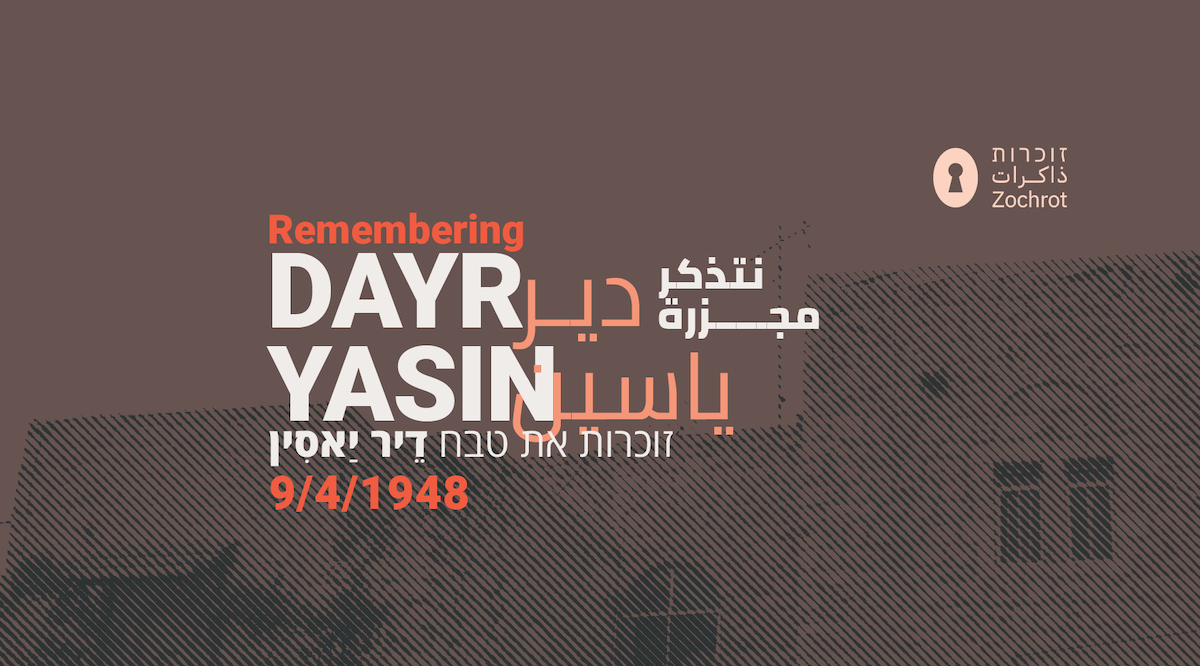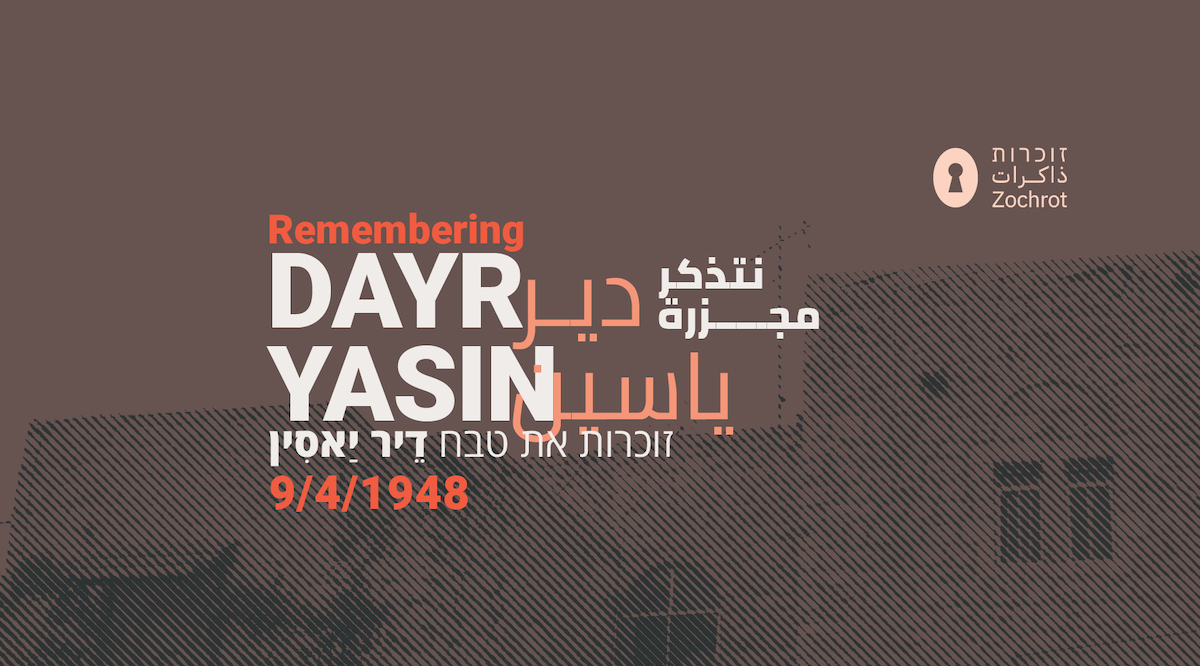Info
District: al-Quds (Jerusalem)
Population 1948: 710
Occupation date: 09/04/1948
Occupying unit: Irgun (Etzel) & Lehi (Shtern)
Jewish settlements on village/town land before 1948: None
Jewish settlements on village/town land after 1948: Har Nof, Givat Shaul B (Jerusalem)
Background:
Dayr Yasin was a village located on the eastern slopes of a hill at a hight of 800 meters and a wide view to all sides. The village was facing the western outskirts of Jerusalem, separated by a valley with terraces planted with fig, almond and olive trees. At the northern end of the valley there was a road linking Dayr Yasin to Jerusalem and to the main road between Jerusalem and Jaffa, which ran about two kilometers north. The word “Dayr“ (monastery) is not unusual for the name of a Palestinian village, especially since Dayr Yasin was located close to Jerusalem. At the southwestern end of the village was a large ruin simply known as “Dayr“.
At the beginning of the Ottoman era, which began in 1517, the nucleus of settlement activity in the area was Khirbat Ayn Al-Tulut, about 500 meters to the west of the site of the village in 1948. In 1596, the village was under the administration of the Jerusalem district. The population of 39 people paid taxes on wheat, barley and olive trees.
It is not known, when exactly the population moved to the site of Dayr Yasin. The village was named in honor of Sheikh Yasin, whose tomb is in a mosque located just outside the village. By 1870, an Ottoman village list indicated 13 houses and a population of 48, though the list only counted men.
In the late 19th century, Dayr Yassin houses were built with stones. The village was supplied with drinking water from two springs, one on the northern side of the village and the other on its southern side. Most of its houses, strongly built with thick walls, were clustered in a small area known as the Hara, meaning “Quarter“ or “Neighborhood“. The residents of Dayr Yasin were all Muslims. Around 1906, a Jewish suburb of Jerusalem, Givat Shaul, was built across the valley from Dayr Yasin. It was followed by Monifiori, Beit Hakerem and Yefe Nof. The secondary road connecting Dayr Yasin with Jerusalem, and the road to Jaffa ran through Givat Shaul.
During the First World War, the Turks fortified the hilltop of Dayr Yasin as part of the defense system for Jerusalem. On December 8, 1917, forces led by General Allenby stormed these fortifications. On the following day Jerusalem fell to the British. Until the 1920s, Dayr Yasin was largely dependent on agriculture for livestock farming. The building boom under the British Mandate transformed the foundations of its economy. The area surrounding Dayr Yasin is rich in limestone, the preferred building material in Jerusalem. Since the beginning of the Mandate, the village residents have invested in large quarries along the secondary road leading to the city. This has developed the industry of quarrying and cutting stones. By the late 1940s there were four stone crushers functioning in the village. The industry encouraged wealthy villagers to invest their money in transporting stones while others became truck drivers. In 1935, a local bus company was established in a joint venture with the neighboring village of Lifta (Jerusalem District). As Dayr Yasin flourished, its houses spread from Al Hara to the top of the hill on which it was built, and eastward towards Jerusalem.
In the early days of the British Mandate, Dayr Yasin did not have a school of its own and her sons attended the schools of Lifta or Qalunya. However, in 1943 Deir Yassin was able to build a primary school for boys and in 1946 a girls' school. The two schools were built with the donations of the villagers. At the head of the girls' school was a resident headmistress from Jerusalem. The village also had an oven, two guesthouses, a social club (Al Nahda Club), a savings fund, three shops and four wells, and a second mosque on the high elevations overlooking the village. It was built by Mahmoud Salah, a resident of the village. At the end of the Mandate, many residents of Dayr Yasin were working outside the village. Some of them found work in the nearby British army camps as a servant, carpenter or supervisor of workers. Others worked as writers or teachers. By that time, only 15% of the population was engaged in agriculture.
Dayr Yasin's population rose from 428 in 1931 to 750 in 1948. The number of houses in the same period rose from 91 to 144. During the Ottoman era, the relations between the village and its Jewish neighbors were good, especially in the early period, when Arabic-speaking Sepharic Yemenite Jews constituted the majority of the neighboring population. However, these relations deteriorated with the growth of Zionism, particularly during the arab general strike in 1936-1939. Relations picked up again during the economic boom years of full employment of World War II. Thus, by 1948, Dayr Yasin was a flourishing, relatively prosperous village with a relatively peaceful connection to its Jewish neighbors, with whom much business was done.
Invasion and massacre of April 1948
Dayr Yasin was the site of the best-known and perhaps bloodiest atrocity of the war. Although the massacre was carried out by the Irgun Zvai Leumi (IZL) and Stern Gang (LEHI), the occupation of the village fell within the general framework of the Haganah’s Operation Nachshon (see Bayt Naqquba, Jerusalem District). A Palmach unit with mortars took part in the assault after the villagers had brought to a halt the initial surprise attack by the IZL and LEHI forces. The History of the Haganah states that David Shaltiel, the Haganah’s Jerusalem commander, learned of the IZL-LEHI plan to attack Dayr Yasin. He informed the commanders of these groups that the occupation and retention of the village were a part of the general Haganah plan in Operation Nachshon, although Dayr Yasin had signed a nonaggression agreement with the Haganah. He added that he had no objection to their implementation of the task, provided the IZL-LEHI forces could hold on to the village. Of they were unable to do so, he warned, they should not partially destroy the village, as this would encourage the enemy to convert it into a military base. Shaltiel later conceded that, in response to requests made in the course of the attack, he had supplied the attacking units with ammunition for rifles and Sten guns and had provided them with mortar cover.
At the time, the New York Times correspondent reported: “Twenty men of the (Jewish) Agency’s Haganah militia reinforced fifty-five Irgunists and forty-five Sternists who seized the village.“ The Haganah stated that at dawn on 9 April 1948, 120 men (80 from IZL and 40 from LEHI) began an assault on the village. According to that account, 4 of the attackers were killed while storming the village. The History of the Haganah mentions that they carried out a massacre “without discriminating among men and women, children and old people. They finished their work by loading some of the “prisoners“ who had fallen into their hands onto cars and parading them in the streets of Jerusalem in a “victory convoy“, amidst the cheers of the Jewish masses. After that, these “prisoners“ were returned to the village and killed. The victims included men, women and children, a total of 245 people.“ The New York Times reported that about half of the victims were women and children; another 70 women and children from the village were carried off and later turned over to the British army in Jerusalem.
After the massacre, the Irgunists and Sternists escorted a party of U.S. correspondents, including one from the Times, to a house at the nearby settlement of Giv’at Sha’ul. Over tea and cookies, the perpetratos “amplified the details“ of the operation. They said that ten houses had been blown up in the village and that the village was “under control“ within two hours, adding that he had expected the Haganah to take over the village. Contrary to this spokesman, five hours after the beginning of the attack, the Irgun and Stern forces requested support from the Haganah. According to the New York Times, the Haganah occupied Dayr Yasin in the aftermath of the massacre, on April 10, although the newspaper later said that the village was ‚formally‘ occupied on the 11 April. “We will maintain the graves and remaining property…“ A Haganah statement proclaimed, “and return it to the owners when the time comes.“ The previous day, a member of the Arab Higher Committee said that he had appealed to the British police and army for the return of the victim’s bodies for burial, but to no avail.
The massacre was subsequently condemned by the main zionist authorities, including the Haganah, the Jewish Agency and the Chief Rabbinate. Dayr Yasin soon became a model of the atrocities committed during 1948, and the impact of the massacre on the exodus of the Palestinians in that year became the subject of intense controversy in Israeli and Palestinian circles. The literature on the Dayr Yasin massacre in Hebrew, English and Arabic is voluminous; the Institute for Palestine Studies is in the process of preparing a special monograph on the subject.
Israeli Settlements on Village Lands
In the summer of 1949 several hundred Jewish immigrants were settled near Dayr Yasin. The new settlement was named Giv’at Sha’ul Bet, after the older settlement of Giv’at Sha’ul which had been established around 1906. Four prominent Israeli intellectuals wrote to Ben-Gurion, asking that the village be left empty as a “terrible and tragic symbol.“ But their repeated appeals went unanswered. Present at the dedication ceremony of Giv’at Sha’ul Bet were several cabinet ministers, the two chief rabbis of Israel, and the Jewish mayor of Jerusalem. The Jewish neighborhood of Giv’at Sha’ul has now spread over the eastern sector of the village. Today the hill of Dayr Yasin and its site are engulfed on all sides by the urban spread of Israeli West Jerusalem.
The Village Today
Many of the village houses on the hill are still standing and have been incorporated into an Israeli hospital for the mentally ill that was established on the site. Some houses outside the fence of the hospital grounds are used for residential and commercial purposes, or as warehouses. Outside the fence, there are carob and almond trees and the stumps of olive trees. Several wells are located at the southwestern edge of the site. The old village cemetery, southeast of the site, is unkempt and threatened by debris from a ring road that has been constructed around the village hill. One tall cypress tree still stands at the center of the cemetery.
-------------
Source: al-Khalidi, Walid (ed.). All that remains: the Palestinian villages occupied and depopulated by Israel in 1948. Washington DC: 1992.
Videos
On the 72nd anniversary of the Dayr Yasin massacre, the occupation and depopulation of the village, Zochrot is organized an international virtual memorial event, together with Palestinian, Jewish and international activists.
Zoom from the Spiritual Center "Remembering Deir Yassin” A virtual commemoration of the massacre in Deir Yassin on April 9, 1948.
48mm Film Festival From Nakba to Return
Commemorating 69 years to Dayr Yassin massacre
Commemorating 69 years to Dayr Yassin massacre
Musawa Channel
This excellent film brings rarely seen footage of Palestine before 1948 juxtaposed with historical research, eyewitness accounts, stunning choreography, moving testimonials, and historical documents.
FORGIVENESS (Mechilot) tells the story of David Adler, a 20-year old American-Israeli who decides to move back to Israel, only to find himself committed to a mental institution that sits on the ruins of a Palestinian village called Deir Yassin.
On Wednesday, April 8, we commemorated the 67th anniversary of the Dayr Yassin massacre. We walked along the main street of the village (now Kanfey Nesharim Street), learn about the village and its Nakba, and passed some of the Palestinian buildings that are still standing along the road - people were massacred in some of them - as well as the Kfar Shaul mental hospital, whose buildings were once the core of the village. We stopped at the remains of the Palestinian cemetery and ended the tour in the grove behind the hospital.
Short Report
Testimony by Uri Pinkerfeld, Palmach soldier, Born in Jerusalem in 1928, served in the Palmach's Third Battalion.
MK Michael Ben Ari: You have forgotten all about it and you don't even know!
Eitan (Zochrot): You have forgotten what it means to be a Jew.
MK Michael Ben Ari: Have I forgotten what it means to be a Jew? These people [the Palestinians] – they wanted to massacre you!
A film that describes and shows the various activities of Zochrot Organization, combined with interviews with activists who tell of the challenges and difficulties they experience, being a part of Israeli society, due to their work at Zochrot.
For Part 2 click here
Every year on April 9 Zochrot commemorates the anniversary of the Deir Yassin massacre in a procession to the village and a ceremony nearby (entry to the village itself is not permitted). Participants carry plaques bearing the names of the victims, which are read aloud.


